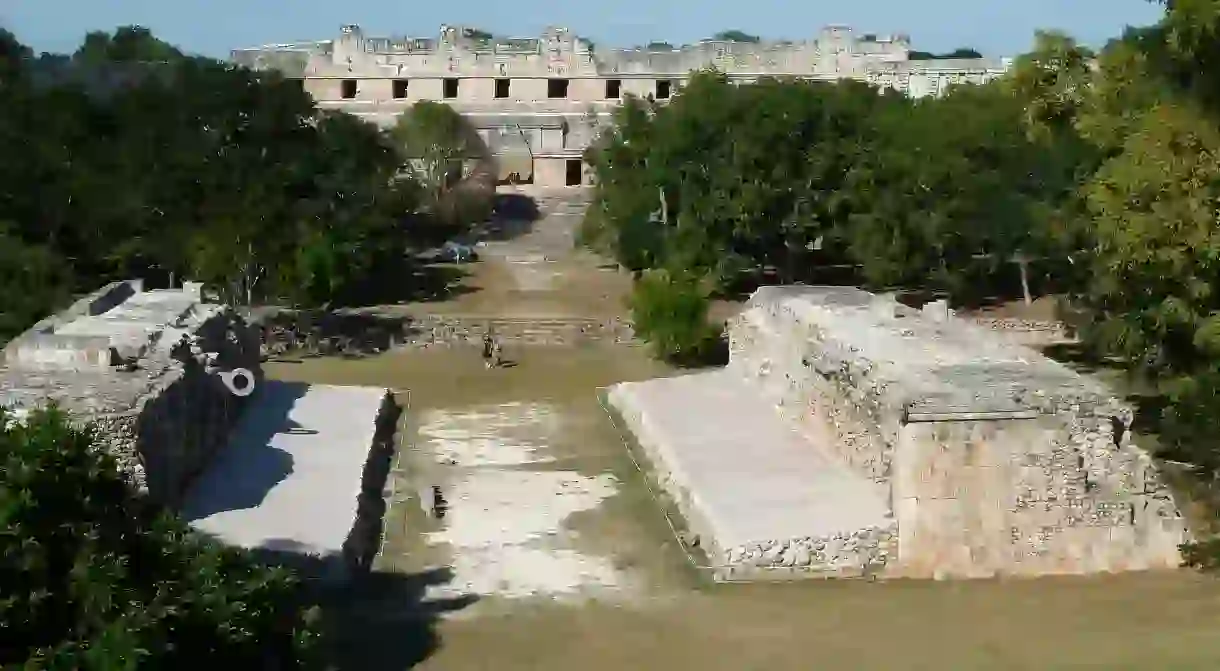A Brief History Of The Mesoamerican Ballgame

If you’ve ever visited an archaeological site in Mexico – think Chichén Itzá, Palenque or Monte Albán – the chances are you’ve come across at least one Mesoamerican ballcourt in your time. You probably remember the strange stone ‘hoops’ that marked either end of the pitch, although perhaps you don’t recall what exactly the juego de pelota (ballgame) was all about. With that in mind, here’s a brief history of this uniquely Mesoamerican pastime.
By 1400 BCE at the very least, the Mesoamerican ballgame was in full swing across much of south-east Mexico – in fact, the oldest known court was discovered in Olmec settlements in Soconusco, Veracruz – and it was soon to spread north to central Mexico. To date, there are thought to be some 1300 ballcourts still in existence, although the addition of the now iconic ‘hoops’ was actually something introduced by the Mayans, before being copied by the Aztecs and Toltecs. While size varies, the long, slim design of the courts, hemmed in on either side by sloping walls, barely appears to have changed over thousands of years. It seems Mesoamericans were as much creatures of habit as we are nowadays.

The superstitions and ritualistic tendencies professional sports players have nowadays are nothing compared to the actual rituals associated with the world’s oldest sport. The most gruesome was the practice of beheading the losing team’s captain. Ritual human sacrifice wasn’t just reserved for losers though, as prisoners of war duped into playing rigged games often suffered the same fate, whereas winners were rewarded with highly prized trophies. Putting sacrifice aside for a moment, evidence does suggest that a good old game of juego de pelota could have just been recreational though.
As well as sacrifice, the Mesoamerican ballgame was extremely significant in many myths; Aztecs saw it as representative of the sun fighting the night, whereas Mayas found it more representative of a battle between those in the underworld against the living.

One intriguing and seemingly tricky rule was that the players had to use their hips to keep the ball in play or score points by knocking it through the stone hoops that adorned either side of the court. This is generally considered the ‘definitive’ version of the Mesoamerican ballgame, although much evidence points towards variations which allowed hands, sticks and rackets to be used. Either way, this was not a sport for the faint hearted; the rubber ball used was pretty hefty – some allegedly weighed up to 4kg – and the subsequent bruising (even with hip guards and protective padding) was no laughing matter. Let’s just say even modern-day rugby players would probably not have lasted very long.

As well as some odd rules and a fascinating history, what the English language knows as the Mesoamerican ballgame also goes by many other titles; in Nahuatl, it’s known as ōllamaliztli, in Maya it’s pitz and modern Spanish knows it simply as juego de pelota. As you can imagine, the variety of indigenous people that indulged in this once popular pastime mean that it had a few distinct but overall similar forms. In fact, a modernised version, known as ulama, is still played in some areas of Sinaloa.














